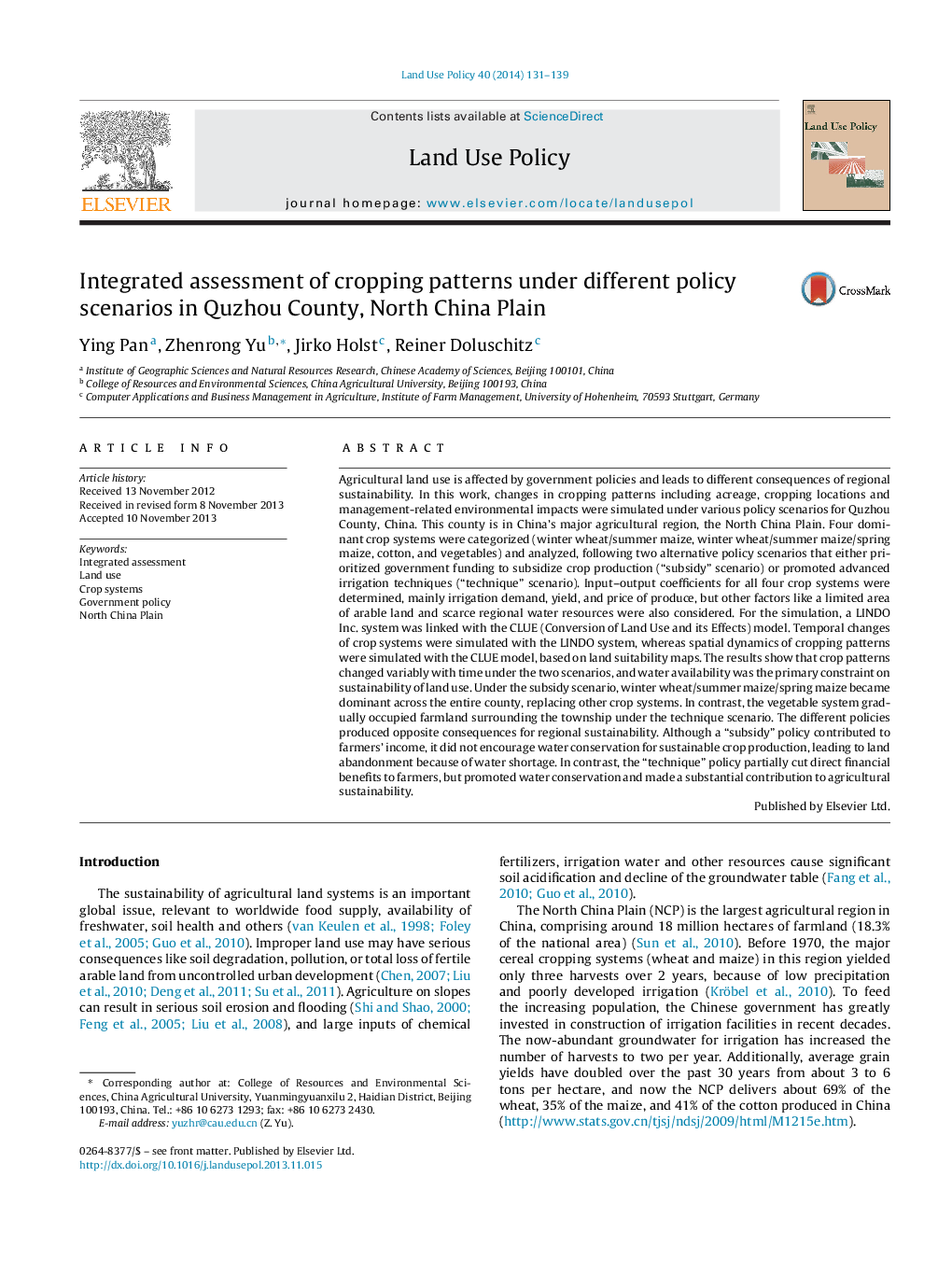| کد مقاله | کد نشریه | سال انتشار | مقاله انگلیسی | نسخه تمام متن |
|---|---|---|---|---|
| 92959 | 160108 | 2014 | 9 صفحه PDF | دانلود رایگان |
• We simulated cropping patterns change under subsidy and technique policy scenarios.
• Cropping patterns changed differently under two policy scenarios.
• Two policies generate opposite consequences for regional sustainability.
• Subsidy policy encouraged farmers to grow more profitable crop systems.
• Technique policy would promote water saving and long term sustainability.
Agricultural land use is affected by government policies and leads to different consequences of regional sustainability. In this work, changes in cropping patterns including acreage, cropping locations and management-related environmental impacts were simulated under various policy scenarios for Quzhou County, China. This county is in China's major agricultural region, the North China Plain. Four dominant crop systems were categorized (winter wheat/summer maize, winter wheat/summer maize/spring maize, cotton, and vegetables) and analyzed, following two alternative policy scenarios that either prioritized government funding to subsidize crop production (“subsidy” scenario) or promoted advanced irrigation techniques (“technique” scenario). Input–output coefficients for all four crop systems were determined, mainly irrigation demand, yield, and price of produce, but other factors like a limited area of arable land and scarce regional water resources were also considered. For the simulation, a LINDO Inc. system was linked with the CLUE (Conversion of Land Use and its Effects) model. Temporal changes of crop systems were simulated with the LINDO system, whereas spatial dynamics of cropping patterns were simulated with the CLUE model, based on land suitability maps. The results show that crop patterns changed variably with time under the two scenarios, and water availability was the primary constraint on sustainability of land use. Under the subsidy scenario, winter wheat/summer maize/spring maize became dominant across the entire county, replacing other crop systems. In contrast, the vegetable system gradually occupied farmland surrounding the township under the technique scenario. The different policies produced opposite consequences for regional sustainability. Although a “subsidy” policy contributed to farmers’ income, it did not encourage water conservation for sustainable crop production, leading to land abandonment because of water shortage. In contrast, the “technique” policy partially cut direct financial benefits to farmers, but promoted water conservation and made a substantial contribution to agricultural sustainability.
Journal: Land Use Policy - Volume 40, September 2014, Pages 131–139
